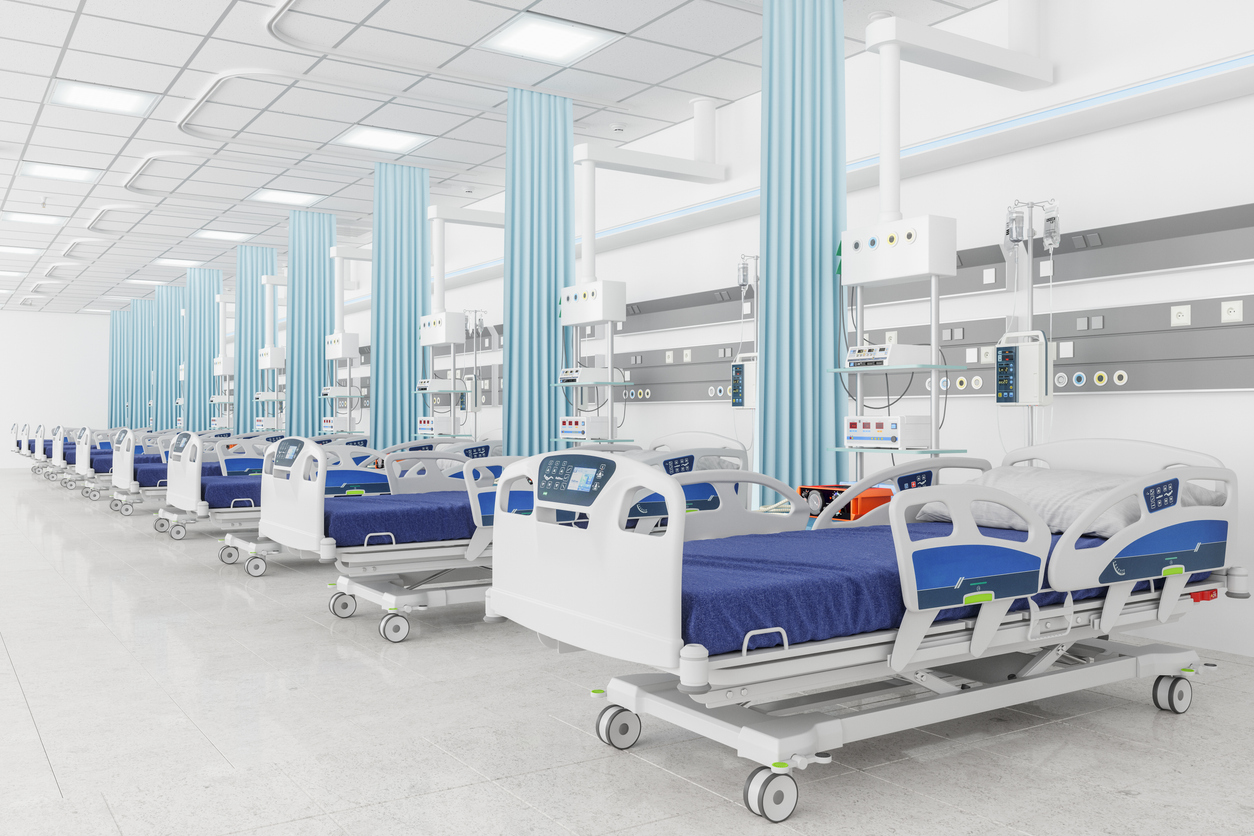This distribution highlights the significant investment and expansion in public health infrastructure by South Indian state governments over the years.
Published Jul 30, 2025 | 11:58 AM ⚊ Updated Jul 30, 2025 | 11:58 AM

Hospital beds. (iStock)
Synopsis: According to data tabled in Parliament, 28 percent of all operational beds in India’s government healthcare infrastructure are located in the five South Indian states. Tamil Nadu leads the South with the highest number of beds, followed by Karnataka and Kerala.
According to data tabled in Parliament, 28 percent of all operational beds in India’s government healthcare infrastructure are located in the five South Indian states.
The information was provided by the Union Ministry of Health and Family Welfare (MoHFW) in response to a set of questions raised by Vellore MP D Kathir Anandh during the ongoing monsoon session of the Lok Sabha.
The DMK MP sought details regarding the country’s shortfall against the World Health Organisation (WHO) recommended norm of three to five hospital beds per 1,000 people; the current bed-to-population ratio in each state; and the steps taken to improve doctor-patient, nurse-patient, and bed-population ratios in both public and private sectors.
He also asked about financial support for centrally sponsored health schemes.
In its written reply, the MoHFW stated that, as of 31 March 2023, India had 8,18,661 government hospital beds across Primary Health Centres (PHCs), Community Health Centres (CHCs), Sub-District Hospitals (SDHs), District Hospitals (DHs), and Medical Colleges.
Out of these, South Indian states collectively accounted for 2,37,236 beds, or 28.98 percent of the total. The state-wise breakdown is as follows:
This distribution highlights the significant investment and expansion in public health infrastructure by South Indian state governments over the years. Tamil Nadu leads the South with the highest number of beds, followed by Karnataka and Kerala.
In contrast, the North India states Bihar, Madhya Pradesh, Rajasthan, and Uttar Pradesh collectively account for 2,23,405 beds, which is 27.28 percent of the total, slightly lower than the southern states despite having significantly higher population shares.
This disparity underscores the persistent gap in health infrastructure development between the northern and southern regions.
The ministry also provided updated figures on medical personnel in the country. As of now, there are 13,86,150 doctors registered under different state medical councils. Additionally, the Ministry of AYUSH reported 7,51,768 registered practitioners.
Assuming 80 percent of both groups are actively practising, the combined doctor-to-population ratio is estimated at 1:811.
However, since the WHO only considers modern medicine doctors when setting global benchmarks, the realistic ratio by WHO standards is 1:1010 — falling just short of the 1:1000 standard.
According to National Medical Commission (NMC) data:
According to the Indian Nursing Council (INC), the country has 39.40 lakh registered nursing personnel, and assuming 80 percent are actively practising, the nurse-to-population ratio stands at 2.23 nurses per 1,000 people.
The country has 5,310 nursing institutions, including 806 government-run colleges, collectively producing around 3.82 lakh nursing professionals annually to bridge the demand-supply gap in healthcare.
(Edited by Muhammed Fazil.)
